This post is featured on The Newsstand, which is a series that highlights articles that have been published in magazines, newspapers, or other forms of printed media. Be sure to check out the archives for previous posts.
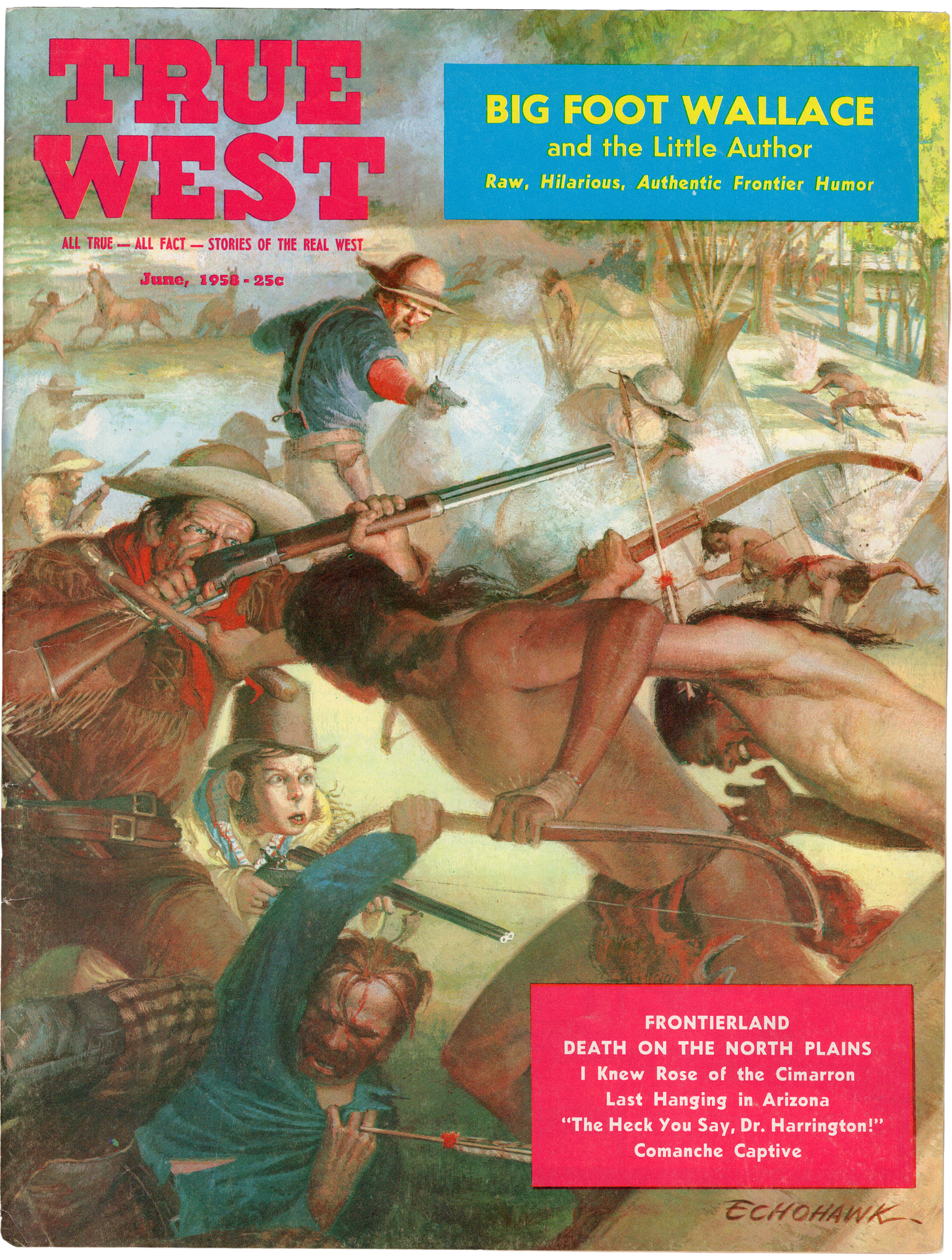
It’s no mystery that Walt Disney was an utter fanatic about the American Frontier. From the people and wildlife to the stories — both mostly-true and wildly embellished — to the colorful geologic formations, it all seemed to completely mystify him.
That’s why I wasn’t surprised to see a June 1958 article authored by him in an old-school magazine publication called True West. I bought a copy, scanned it, and regurgitated the text onto this post so that it can be preserved and read by all.
In the article, Walt details his adoration and personal connection to developing the first-ever Frontierland at Disneyland in Anaheim, California.
Given the recent removal of the Rivers of America and Tom Sawyer Island from Walt Disney World’s Frontierland, Walt’s words provide some interesting context to better understand his vision and how it is or isn’t manifesting in today’s terms (and why).
As with many articles and texts of this age, it does contain some out-of-date language. It’s inclusion in this post isn’t a reflection of Magic, Noted but rather to preserve the content of the article, as Walt intended upon its publishing.
“So that it may never be lost to the eyes of the young in heart, a great man has brought back in replica a part of the very heart of the Old West in the form of Frontierland.”
“One of the biggest joys of my life is sitting on the levee in the Frontierland section of Disneyland, our park in Anaheim, California. As I gaze to the north, I can see the smokestacks of the steamer Mark Twain belching smoke and skirting along toward the tip of Tom Sawyer Island.
Then the boat hoves into view; the crowds line against the white railings. It moves majestically along, the stern paddle churning up the river foam. The captain lets the whistle blast, signaling his intention to land, and the Dixieland band on the shore swings into a ragtime tune.
I thrill all over every time that happens. Other people have told me they too get a big kick out of the Mark Twain swinging in to shore, but I doubt if anybody could enjoy it as much as I do.
You see, I go back a long way with stern-wheelers; back to the Missouri River in the 1910’s. When I was growing up in Kansas City, there were still two stern-wheelers plying out of that town.
They were called the Chester and the Majestic, and they were handsome boats to see. They ran down the river to St. Louis, but on Sundays one would be in port and would take customers on river excursions for a dollar a head. I was on hand for a cruise whenever I could scrape together a dollar from selling newspapers.
The Missouri river boats had to be stern-wheelers because there were so many sand bars. When they ran aground, they could reverse the wheel and pull off, something a side-wheeler couldn’t do.
One of the thrills of my young life was when one of the excursion boats I was riding struck a bar. It remained there for an hour while the deck hands pushed long poles into the sand and the wheel churned mightily. Finally, with a great whoosh and swirl of foam, the boat pulled itself free.
These boyhood memories are the reason for my fondness for Frontierland. Of course, all the realms of Disneyland intrigue me — Fantasyland, Adventureland, Tomorrowland, and Main Street. But Frontierland evokes a special response because it reminds me of my youthful days on the Missouri.”
“It was a thrill for a boy to grow up in Missouri after the turn of the century. It was a special thrill for a boy who had been living in a big city like Chicago.
My family moved from city living in Chicago to the farm life of Marceline, Missouri, when I was not yet five. That was in 1906, when elements of the frontier were still visible in rural Missouri. Marceline was only sixty miles from Hannibal, Mark Twain‘s home town. I can recall seeing the big river boats dock there. And I remember exploring nearby caves like the one in which Tom Sawyer and Becky Thatcher got lost.
Marceline was not far from the railroad that used to take the river boat passengers to the stagecoach line at St. Joseph. A boy could have fun imagining outlaws swooping down on the coaches and shooting it out with the law. Less than fifty years before, the Pony Express had covered the same route!
My reading in that period was largely limited to the books in the family library. Many of them concerned the Civil War and tales of the frontier, both true and fictional. That was when I became acquainted with heroes like Daniel Boone, Thomas Hart Benton, Davy Crockett, and Mike Fink. The fact that many such heroes covered the same ground I knew in Missouri made them all the more real to me.
So you can see why Frontierland occupied a great deal of my thought when we were planning Disneyland. Come on — let me show you around.
We enter Frontierland from the plaza that connects all the realms. It’s to the west, of course. As we pass over a bridge, we come to a log stockade. Those logs are the real thing; they were felled in the mountain region near Lake Arrowhead, California, and hand-hewn by carpenters who were specially chosen for their experience in log cabin or ship building.
Inside, you’ll see some gnarled pine posts. Those were my own discovery. When I was on a trip to the Jackson Hole country in Wyoming, I came across some logs with unusual buris on them. I figured they were just the thing for Frontierland and had sixty of them shipped down to California.
A typical frontier village catches your eye first, and you’ll find many things to hold your interest... The Davy Crockett Frontier Arcade with its authentic display of guns that won the West… The leather shop, Mexican fiesta village, trading post, bone carving shop, exhibits of rare rocks and gems… The Golden Horseshoe Saloon, where a cast has presented a musical revue more than 3,000 times…
You’ve got to watch your step around this territory. Every once in a while, Sheriff Lucky and an ornery scoundrel named Black Bart have a running gun fight. There’s a lot of shooting and shouting, and the sheriff always wins, of course.
To the right is the entrance to the wilderness and you can go by stagecoach, Conestoga wagon, or mule pack. Or you can take the mine train of the Rainbow Mountain Mining and Exploration Company.
The train leaves in front of a miniature Western mining town. As it chugs into the desert region, the engineer points out various sights. There are weird cactus growths, some of which appear to take human forms. You’d swear one of them was trying to hitchhike.”
“You pass the Devil‘s Paint Pots, where different colored mud burbles out of the ground. Then you come to the wind-worn Rocky Gorge, with such formations as Coyote Rock, Elephant Rock, Natural Window Rock, and the Balancing Rocks. These teeter precariously and almost fall, oddly enough, just as the train passes.
Then the train enters the Rainbow Caverns, where cascading waterfalls form weird shapes in an eerie light. The effect is fascinating.
After the train ride, we can walk out to the waterfront of the Rivers of America. Here is the big waterway that touches most of Frontierland. The best way to see it all is to take a cruise on the Mark Twain.
As you can expect from a Missouri-bred boy, I wanted the Mark Twain to be authentic. Our staff did extensive research on river boats of the past before it came up with a design. Like most of Disneyland, the boat is under-scale to give a fantasy-like appearance. That meant the engines had to be specially built to fit into a smaller craft.
The super structure was designed and built at the studio. The hull was built at the Todd Shipyards in Long Beach, California. The dimensions: overall length — 108 feet; height, keel to pilothouse — 28 feet; beam — 27 1/2 feet; displacement — 125 tons.
The Mark Twain will accommodate 350 passengers on its three decks — provided the Disneyland Band doesn’t decide to go along to entertain the travelers. The boat draws a little over two feet of water. The Rivers of America are five feet deep, about 200 feet wide, and a half-mile long. The bottom is clay and liquid cement to keep it leak-proof.
As we pull away from the dock, you can see the eating places that line the waterfront. Here you can get real Mexican or New Orleans food in authentic surroundings. If you look real close, you’ll see a monument containing an ancient anchor. We found it in an antique shop in New Orleans and it’s believed to be from a pirate ship. We like to think it was John Lafitte’s.
We round the tip of Tom Sawyer Island and head up the channel. To the left is the freight station of the Disneyland and Santa Fe Railroad. In that area I’m planning a Louisiana Purchase section, where we’ll produce the New Orleans French Quarter, together with a fantastic Haunted House filled with all manner of delightful ghosts.
Up the stream a ways, we pass a crowd of people on Mike Fink’s keelboat, the Gullywhumper. This is one of the river boats we used in the feature, ‘Davy Crockett and the River Pirates’.
The Indian village is next, and you’ll see a forest of tepees, built exactly as the redskins made them, plus a tribe of Indians. They’re friendly, though, and will perform their tribal dances. They’ll also help you paddle your own canoe, if you feel so inclined. Indian war canoes, bearing a score of paddles, skim around the Rivers of America.
After the Indians comes the wilderness and you can see all manner of wild life if you’re alert. Deer, mountain lions, elk, and other animals actually move. They’re life-like models created at the studio.”
“We round the upper tip of Tom Sawyer Island and head downstream for the dock, perhaps waving to a crowded stagecoach on its way to the Painted Desert.
You’ve seen all of Frontierland, but there’s one place you have to explore. That’s Tom Sawyer Island.
There’s only one way to get to the Island, and that’s via a log raft. There are four of them, the Tom Sawyer, the Huck Finn, the Becky Thatcher, and the Injun Joe.
Once you’re on the island, the place is yours. You can explore it to your heart’s content.
First, you might visit the Old Mill. It really works — a massive overshot wheel that is turned by a stream of water tumbling down a wooden flume.
If you feel like fishing, you can borrow one of Huck Finn’s favorite poles and a can of worms. If you’re lucky, you might catch a catfish or perch at Catfish Cove.
Nearby is Injun Joe’s Cave, which harks back to the caves I used to explore in Hannibal. This cave is the real thing, too. You’ll see stalactites and stalagmites, a labyrinth of passages, the names of Tom Sawyer and Becky Thatcher written in candle smoke, fossils in the walls, and the burial place of Injun Joe’s treasure. For an added thrill, we’ve added Injun Joe’s mournful cry in the darkness and the ever-present moaning of the wind.
There’s a suspension bridge over Smuggler’s Cove which the kids love to rock to see if it will come down. It won’t. And another attraction is Tom and Huck’s Tree House, the highest landpoint in Disneyland. We like to tell the story that lightning struck the tree many years ago, causing three waterfalls to spring from its roots. The three falls pour in different directions, creating the headwaters of the Rivers of America.
On the isthmus of the island is a weird formation of rocks which kids of all ages seem to enjoy climbing on. There’s a merry-go-round rock, a teeter-totter rock, and a Castle Rock Ridge with a maze leading to the Dungeon of No Escape.
Onward we see Fort Wilderness with stockades and blockhouses like the regimental headquarters where Davy Crockett and George Russell reported to Maj. Gen. Andrew Jackson in the Cherokee Indian campaign of 1813. You can mount to the top of the staircase and peer down the island to the burning cabin of some poor pioneer who was attacked by the redskins.
There’s a secret escape from Fort Wilderness, a dark, underground passageway that leads you to the bank of the river.
I’ve told you the extent of Frontierland today, but that isn’t the end of the story. As with all of the park, I want to keep adding new features to Frontierland, new exhibits that will show today’s youth the America of our great-grandparent’s day — and before. In this era, when space travel is talked of as almost here, we shouldn’t lose sight of our glorious past.”
Well, there we have it! I love highlighting these older articles and interviews so if you’d like to see more of them, let me know and I can keep my eyes peeled.
If you enjoyed today’s post, be sure to smash that lil’ heart icon below! It helps increase this post’s visibility on Substack and brings more folks closer to the magic. As always, thank you so much for reading. I appreciate you being here.
See ya real soon,
👋🏻 Lookin’ for more magic? Come say “hi” on Instagram!
☕ Help fuel those early mornings and late nights by buying me a coffee
💬 Found something in this post that resonated with you? Highlight and share it as a note to your Substack feed!
💌 Spread the magic by sending this post to a fellow Disney nerd
🗣️ Got a Substack of your own? Recommend Magic, Noted to your readers!



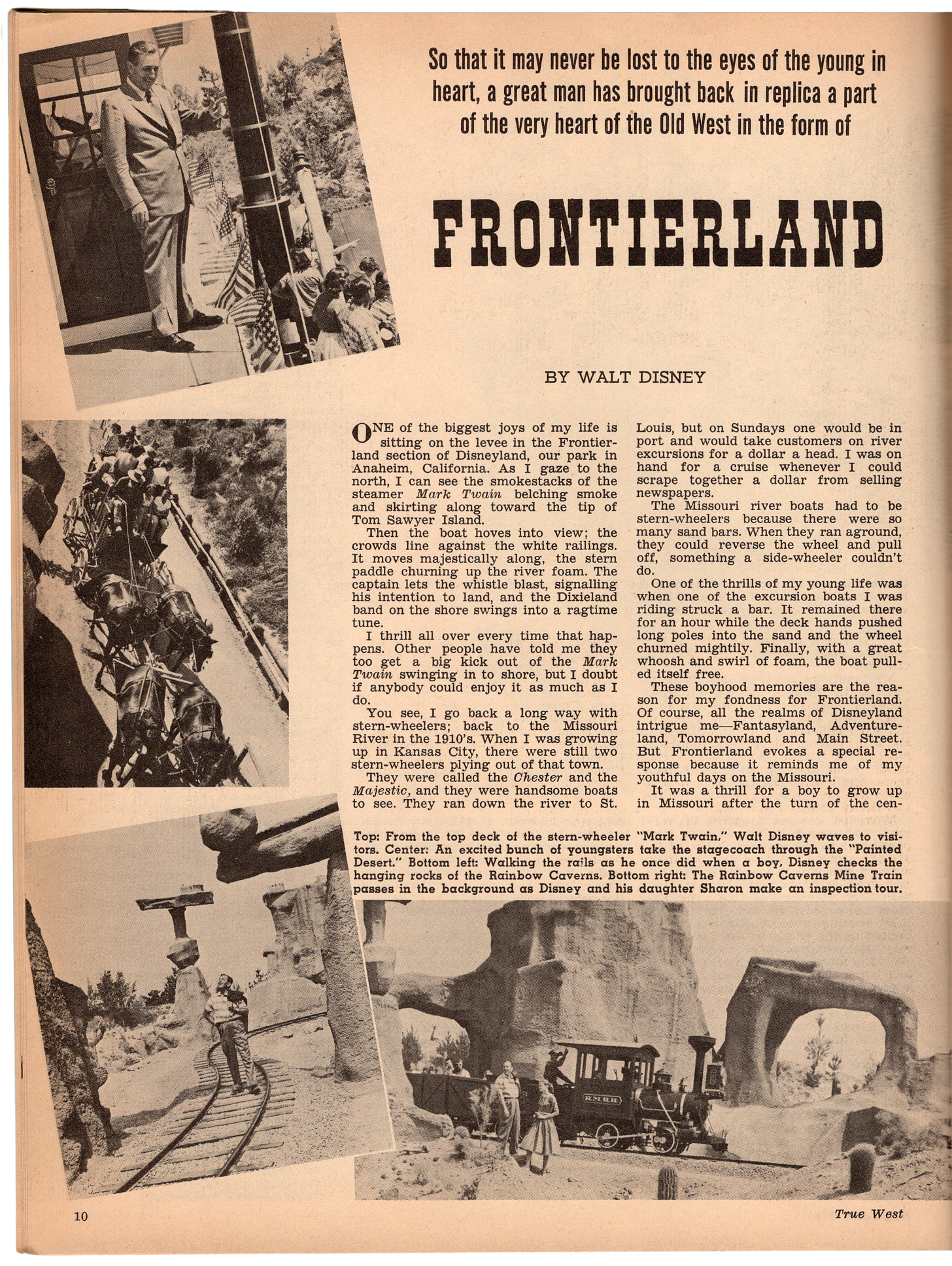
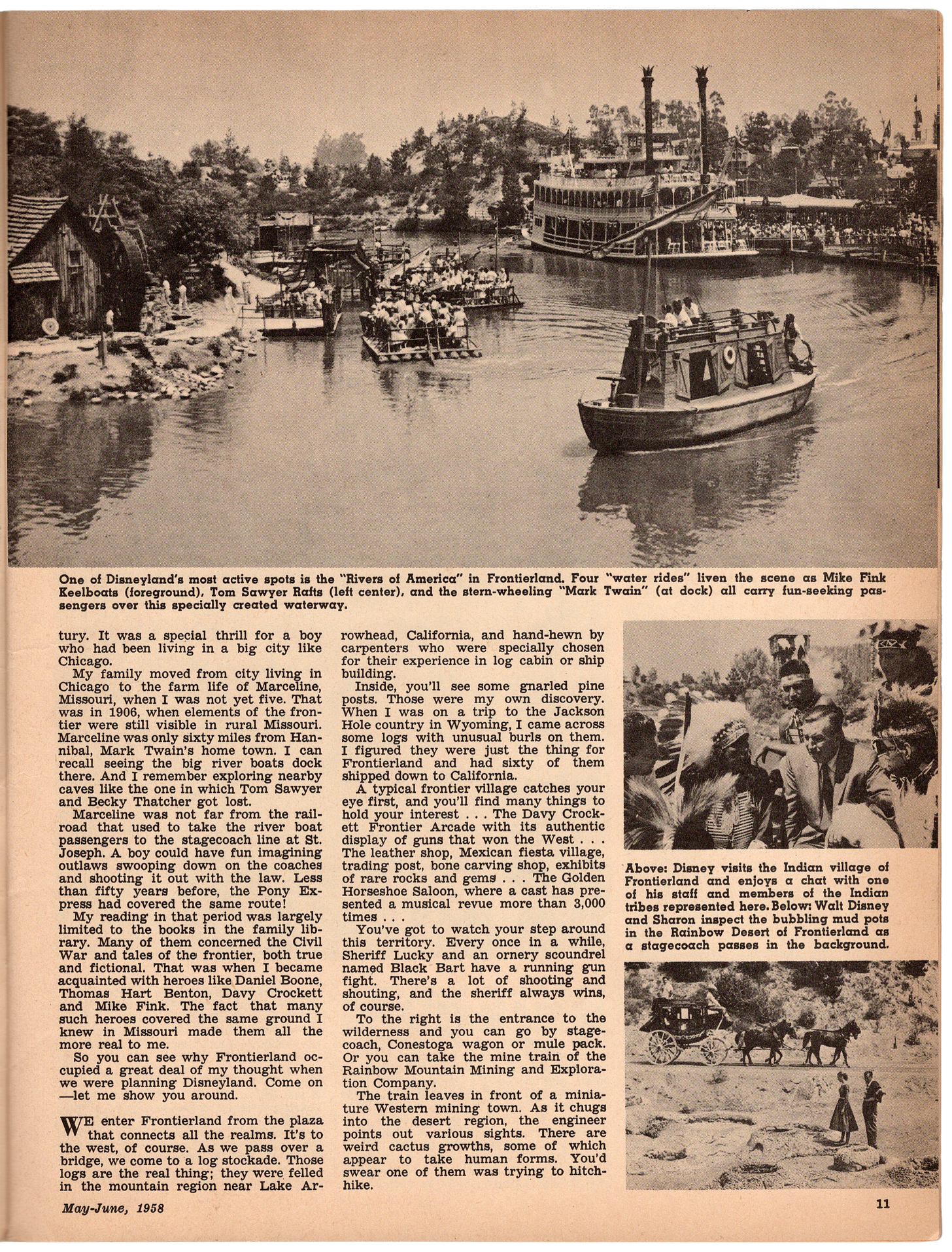
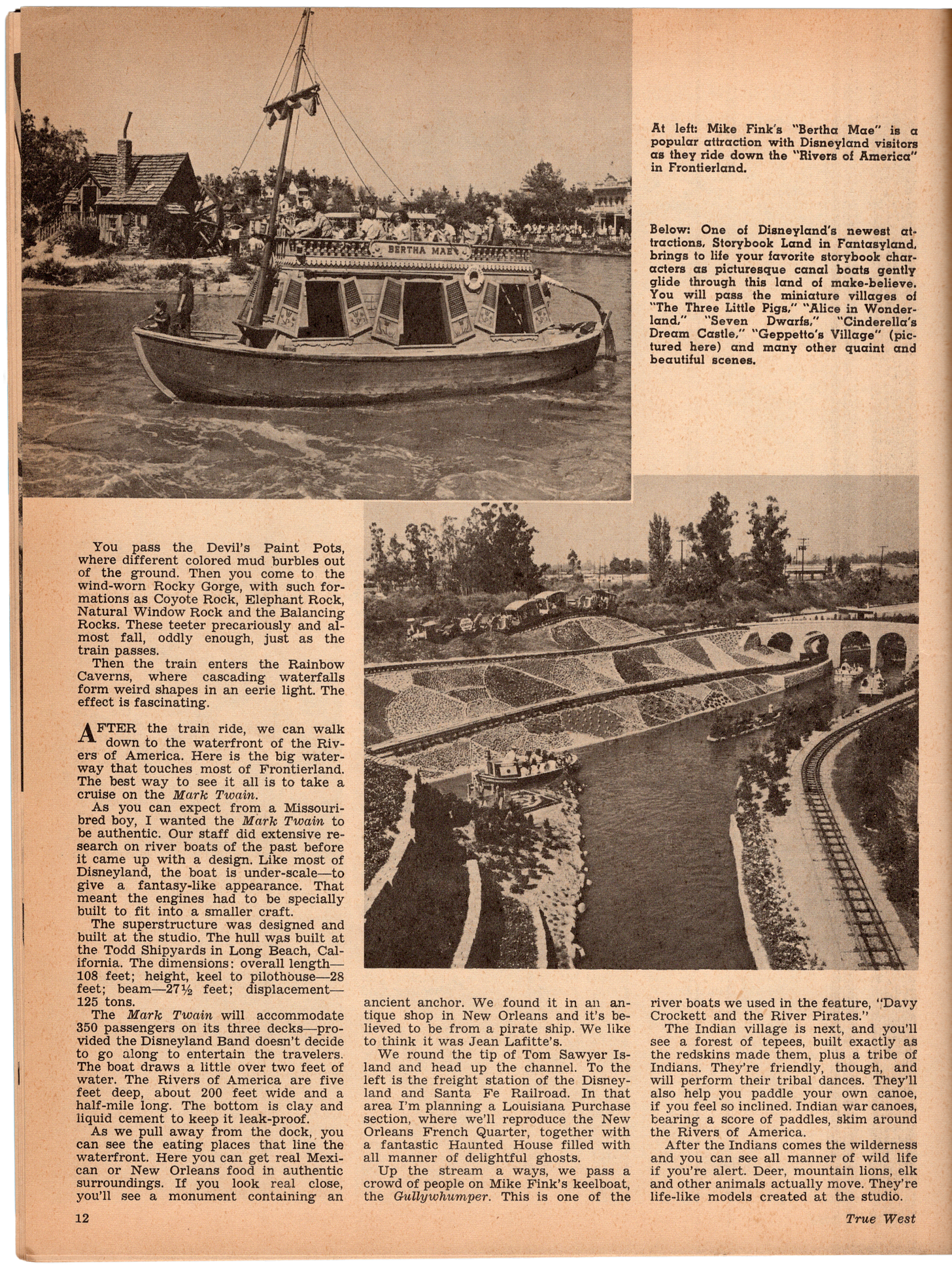
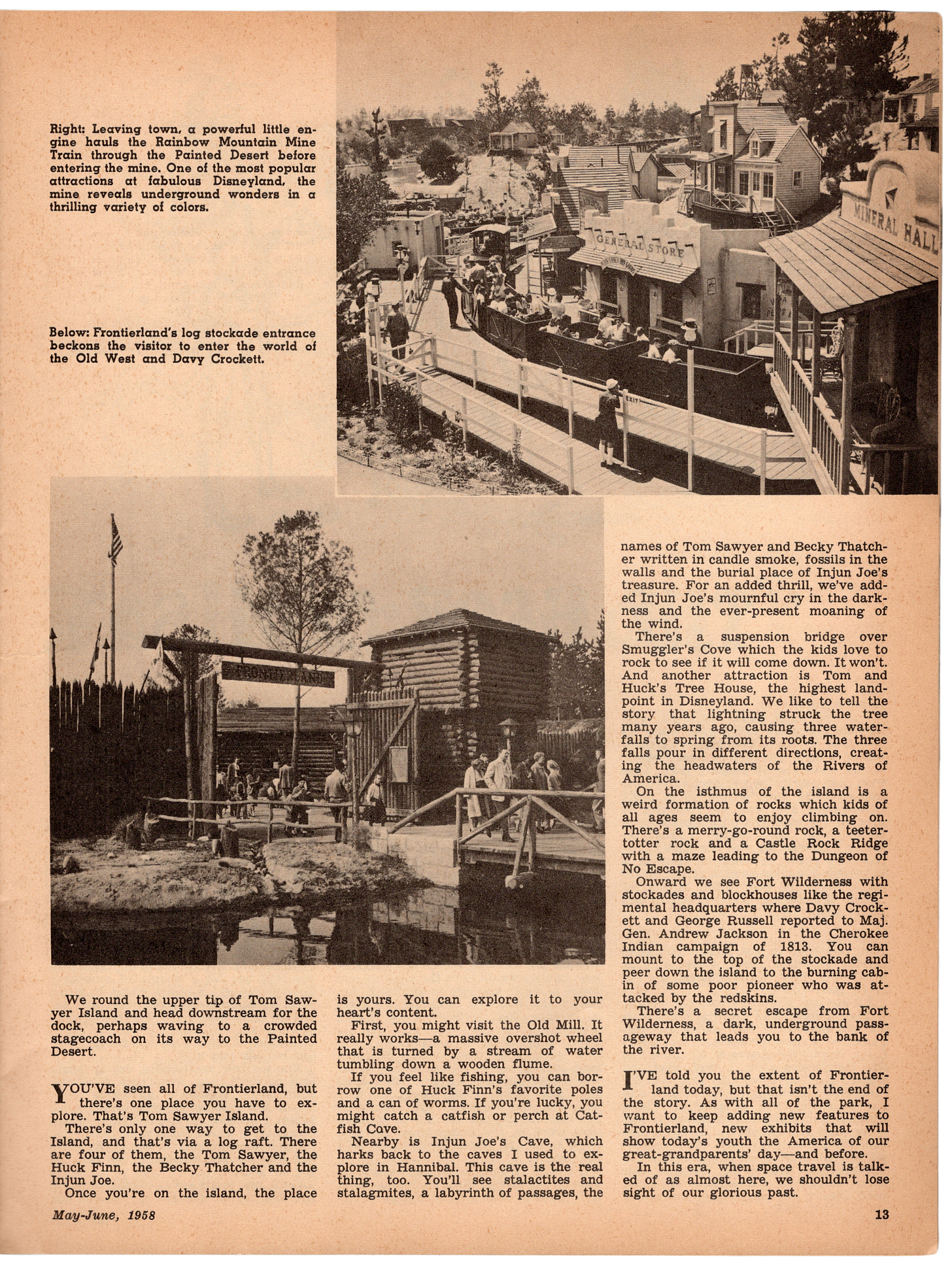


I am loving these articles you are finding! Keep up the incredible work!